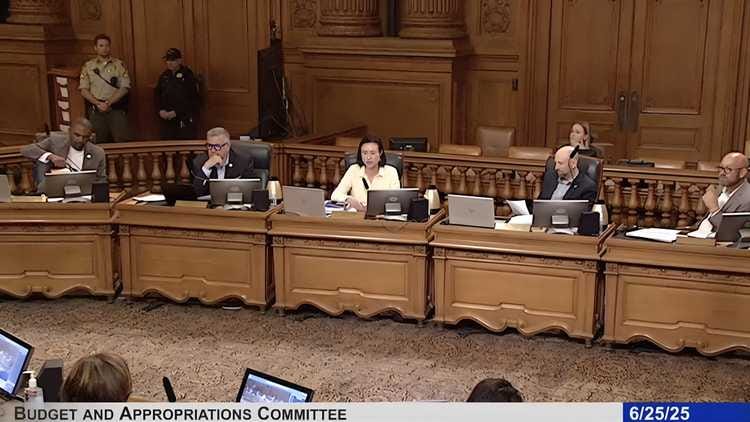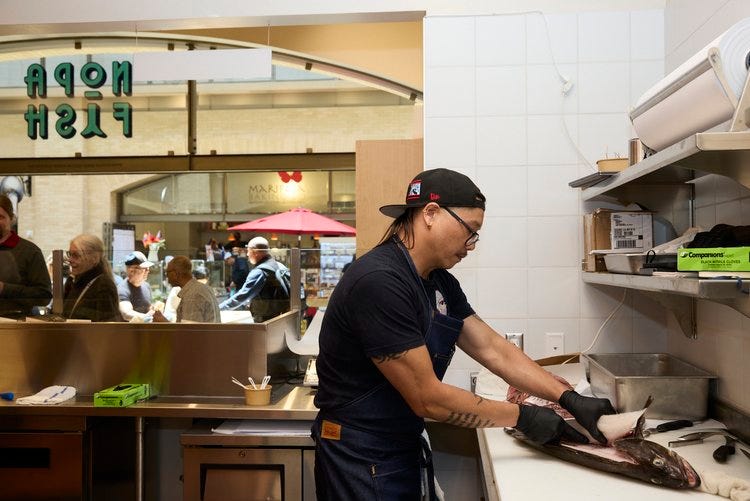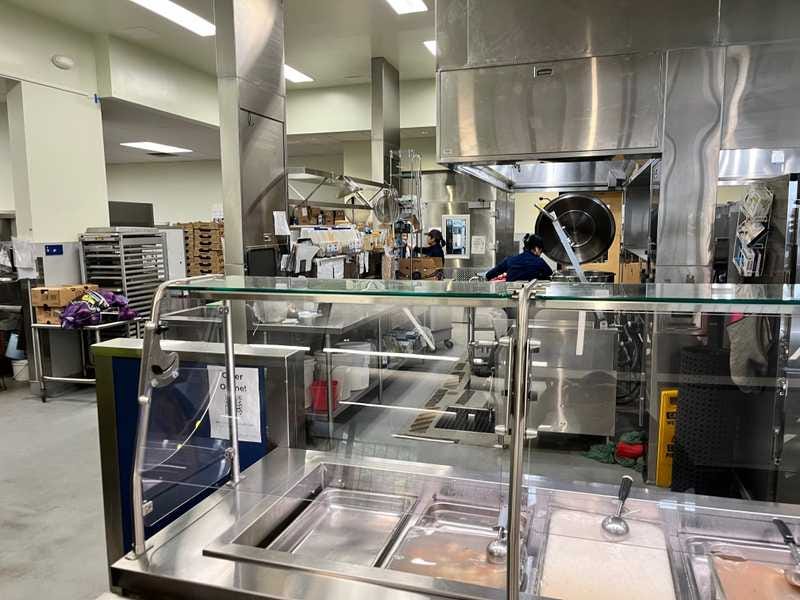Newsom Says No to Prop 36 Funding
PLUS: How Prop A is improving what SF students eat
What You Need To Know
Here’s what happened around the city for the week of June 22, 2025:
- Newsom says no to Prop. 36 funding
- San Francisco’s budget is a step in the right direction, but not far enough
- Board of Supervisors approves reallocating Prop C funds to expand shelter system
- Confirmed: Golden City Football Club is coming to Kezar Stadium
Recent & upcoming openings:
- Nopa Fish opens in the Ferry Building
Research:
- How Prop A is Improving What SF Students Eat
Newsom says no to Prop. 36 funding
Published June 24, 2025
California voters passed Prop. 36 by a landslide, demanding tougher penalties for repeat drug and theft offenses. But Governor Gavin Newsom has refused to fund the new law. He wants local governments to fund it, after openly opposing the measure last November.
The Facts
Governor Gavin Newsom has decided not to fund Prop 36, citing budget constraints in next year's California State budget.
Proposition 36, passed in November 2024 with 68% support, allows prosecutors to charge repeat drug and theft offenders with felonies, and lets judges mandate treatment instead of prison time. It partially rolls back 2014’s Prop. 47, which had downgraded many low-level offenses to misdemeanors.
The Context
Supporters of Prop. 36, including prosecutors, local elected officials, and retail groups, requested $250–$400 million in annual state funding. But the problem was, it was just a request. The bill itself did not include any dedicated funding source. So Newsom allocated nothing in his budget, pointing to the state’s $12 billion deficit and arguing that local officials who backed the measure should find the money themselves. Without more funding, counties cannot scale up probation and treatment services, undermining the law’s promise to offer alternatives to incarceration.
The State Legislature provided a different budget than Newsom’s, with $110 million in one-time funding to local governments to support the implementation of Prop 36. This funding includes $50 million for behavioral health, $30 million for courts, and $15 million for public defenders. But even state lawmakers acknowledge that this is not enough. DA offices across the state are already filing 1,700–2,600 Prop. 36 felony cases each month, according to the Public Policy Institute of California.
The GrowSF Take
Governor Newsom should fund Prop 36.
Californians overwhelmingly voted for it because it is a promising approach to the drug and mental health crisis on our streets. Prop 36 finally gives cities the policy tools they need to get people off the streets and into treatment. Before this, there were very few legal tools to get a person addicted to drugs into treatment.
Newsom should not cut Prop 36 out of the state budget because it costs way more to let mentally ill people and people addicted to drugs ricochet through emergency rooms. Our analysis found that 57% of homelessness costs in San Francisco came from emergency rooms / urgent care from 2007-2015.
San Francisco’s budget is a step in the right direction, but not far enough
Published June 27, 2025
On Thursday night, the Board of Supervisors largely approved Mayor Lurie’s two-year budget. This year’s process marks a shift toward fiscal discipline and a renewed focus on core services. In recent years, San Franciscans have seen unchecked growth in city hiring and an explosion in contracts with outside organizations. That era is ending, but more work remains to make lasting changes.
The Facts
Mayor Lurie’s priorities remain mostly intact in the final budget passed by the Board. About 1,400 vacant city jobs are being eliminated, though the Board restored funding for about 50 of the 100 proposed layoffs, favoring city jobs over third-party contracts.
The Board restored $42.4 million of cuts across various categories, including $26.2 million for nonprofit contracts after the Mayor cut $185 million, via what's known as "add-backs." This is a slight drop from last cycle, where the Supervisors added back $50.8 million. The funds don't just add to the budget, though – the Board first has to make extra cuts to the Mayor’s budget to keep the books balanced.
The Context
San Francisco faces an $817 million deficit in FY 2025–26 and nearly $1 billion in FY 2027–28—the largest projected shortfalls in city history. And that’s without accounting for possible cuts in state and federal aid. From 2020 to 2024, the city used one-time federal pandemic relief to plug budget holes. Those funds are now gone, and tax revenues haven’t bounced back as hoped.
The GrowSF Take
Our city budget has surged by 54% since 2012 (inflation-adjusted) – adding $5.5B extra dollars– and city hall staffing has risen 27%. We have to get our spending back in line with our city’s size and core services.
We think this budget was a step in the right direction, but we also think it doesn't go far enough. The city may face years of sluggish economic growth and lagging tax revenues, so taking a cautious approach instead of aggressively making deeper and more systemic reforms may miss a narrow window of political viability.
Still, the budget does well to not cut police, street cleaning, or the District Attorney's office. The City still lags in cleanliness and public disorder, and tax revenues will stay depressed until we get those issues fixed.
Board of Supervisors approves reallocating Prop C funds to expand shelter system
Published June 26, 2025
The Lurie administration wants to prioritize fast and temporary homeless shelters instead of decade-long permanent projects. Though Mayor Lurie asked for $88 million to be spent on on 630 new shelter beds, the Board of Supervisors only gave him $34 million.
The Facts
Proposition C, passed by voters in 2018, taxes corporations that make over 50M to fund homelessness services and sets strict spending guidelines: 50% for permanent supportive housing (PSH), 25% for mental health, 15% for prevention, and up to 10% for shelter.
Mayor Lurie’s proposal would temporarily lift those restrictions for three years, allowing the city to reallocate funds dedicated to PSH towards more shelter. The $34M approved today will help fund a $121 million plan to build 630 new shelter and treatment beds citywide.
The Context
Prop C was passed by voters in 2018 and generates between $250M and $300M annually. This money goes into the “Our City, Our Home” Fund, which is overseen by the Mayor and the Board of Supervisors and monitored by an advisory committee.
There are three major bottlenecks that have led to millions of Prop C dollars being unspent:
The strict legal limits on how Prop C can be used
The Mayor and Board must approve what is funded
Capacity, implementation, and political challenges across every Prop C eligible department
As of 2022, only 26% of $600M in Prop C money reserves were spent.
Lurie’s proposal would change the requirements for three years such that money required for permanent supportive housing could now go towards building more shelter, helping meet immediate street-level needs.
The GrowSF Take
San Francisco needs shelter beds now—and it makes sense to use unspent money to build them. Voters care about real solutions, not bureaucratic categories.
We support Mayor Daniel Lurie’s and Chief of Health and Human Services Kunal Modi’s plan to build more shelter beds using Prop C funds.
Confirmed: Golden City Football Club is coming to Kezar Stadium
Published June 25, 2025
In a press conference today, Mayor Daniel Lurie and District 5 Supervisor Bilal Mahmood announced the official launch of the Golden City Football Club and its $10M renovation of Kezar Stadium.
The Facts
Today, Mayor Daniel Lurie, Supervisor Bilal Mahmood, and Rec and Park Director Phil Ginsburg announced the official launch of Golden City Football Club (GCFC) at Kezar Stadium. GCFC will invest $10M into a new turf field, new seats, new sound system, and a new scoreboard. The partnership between Rec and Parks and GCFC is a big win for the local community, as Kezar will stay open for public access and school athletic events such as track and of course, soccer.
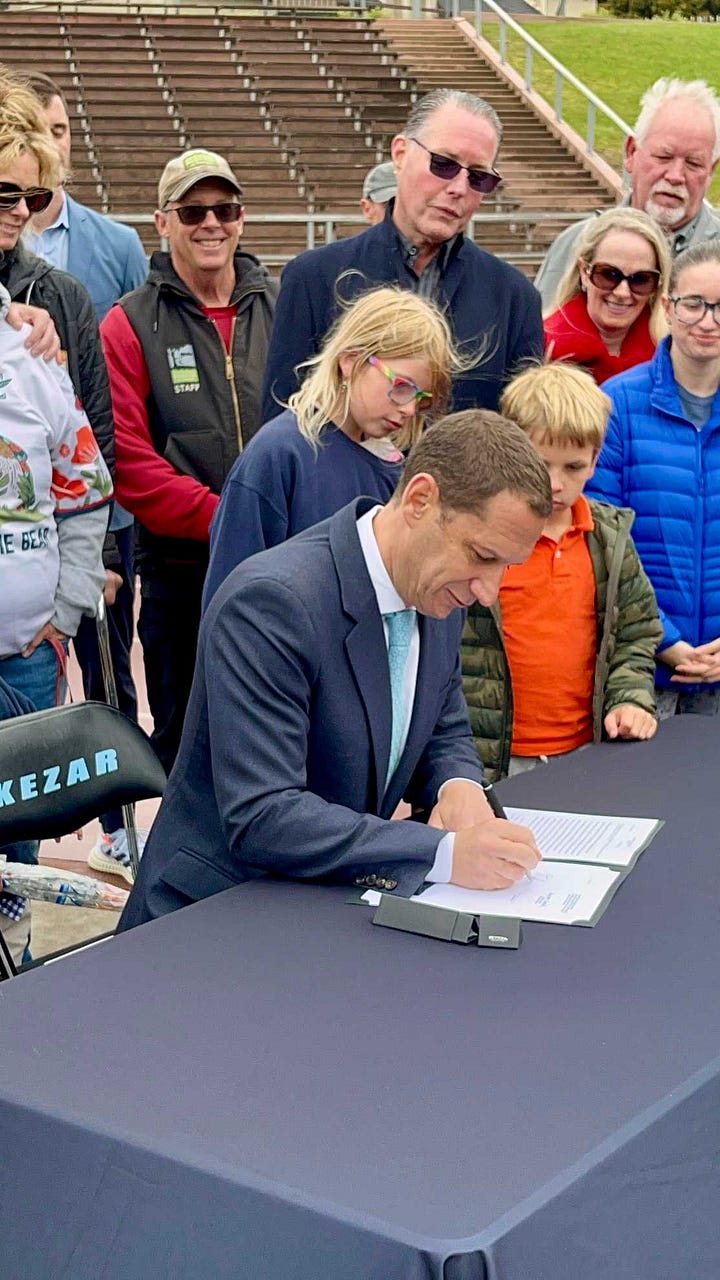
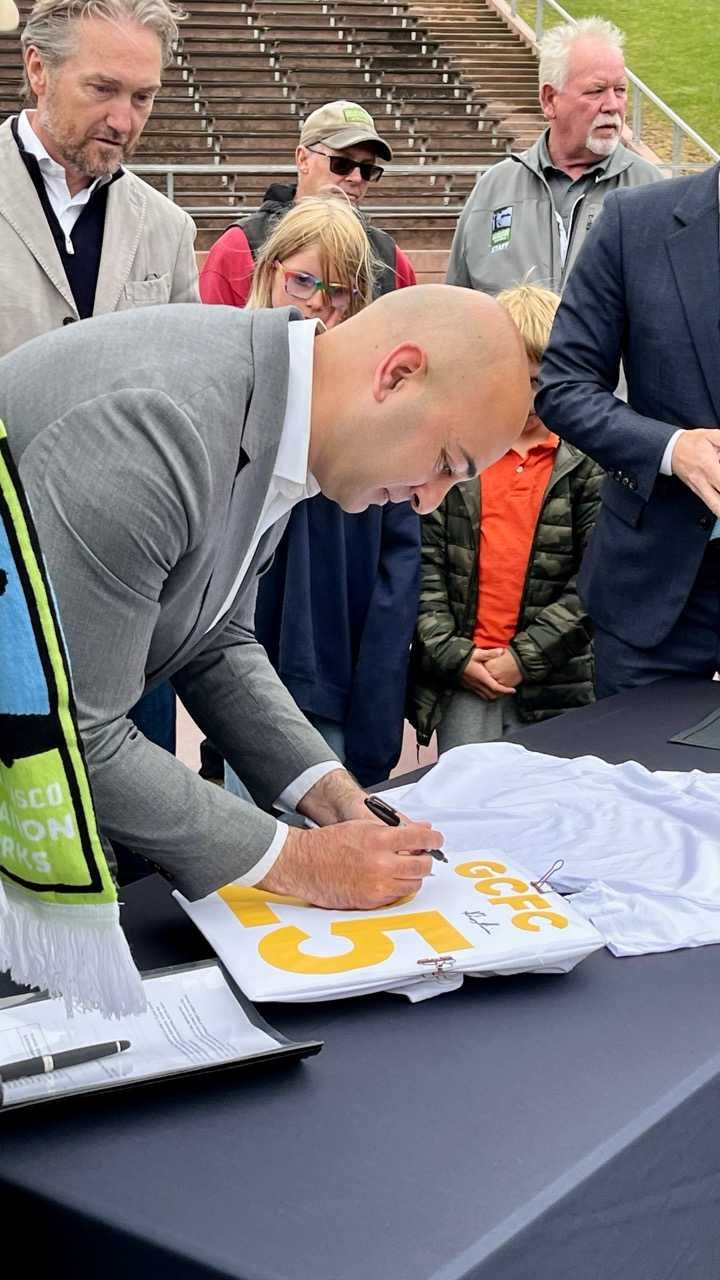
The Context
Kezar Stadium was originally built in 1925, and was the home of the San Francisco 49ers from 1946 to 1970. San Franciscans have been playing sports and celebrating sports at Kezar for a century now this year.
Golden City FC is an MLS-Next pro level soccer team. The inaugural season of games will hopefully be in 2026. Mayor Daniel Lurie, Supervisor Mahmood, and Supervisor Melgar co-sponsored the legislation to bring GCFC to Kezar, and granted a 15 year contract to the stadium.
The GrowSF Take
With over 30,000 kids playing soccer in San Francisco across 2,000 teams, it’s about time we bring a pro-level team to San Francisco. We are thrilled to see GCFC commit to Kezar, and can’t wait to cheer on a whole new team.
And another awesome benefit? Kezar will stay open for the public, so middle school track meets and high school soccer games will continue, uninterrupted. We can’t wait for everyone’s game to begin in the newly upgraded Kezar.
Recent & upcoming openings
A great city is constantly changing and growing, let’s celebrate what’s new!
Nopa Fish opens in the Ferry Building
WHERE: The Ferry Building
WHEN: Mon-Fri 11am-7pm, Sat 10am-7pm
Much-loved Nopa has just opened a fish market and counter inside the Ferry Building, as the old terminal continues to go through a renaissance. Nopa Fish will primarily carry California seafood, offering options like “shrimp arancini, fried rockfish sandwiches, shrimp-egg salad sandwiches, […] fries, and latkes,” according to Eater SF.
Research
How Prop A is Improving What SF Students Eat
Published June 23, 2025
San Francisco public school kids are now getting healthier lunches, cooked locally, thanks to Prop A from November 2024. In 2009, SFUSD just had five cooking staff and primarily served frozen meals shipped in from Chicago, heated and served by about 275 dining staff. But now, thanks to investments made possible by Prop A and additional school bonds, the district cooks 40% of school meals, with the remaining 60% provided by Revolution Foods, a local vendor based in Hayward.
Prop A funds will help SFUSD prepare all of its meals from scratch, without having to work with an external vendor. Most of these meals will be prepared in a central SFUSD kitchen which will cook meals for schools that do not have a kitchen on-site, like elementary schools. Schools that do have a kitchen will get the necessary upgrades to fully prepare meals from scratch.
The National School Lunch Program, which began in 1946, required schools to build on-site kitchen facilities to prepare school meals. But many SFUSD schools were built prior to 1946, like Lincoln and Washington High Schools, Everett Middle School, and West Portal Elementary School and many never got kitchen upgrades after the program began., We will finally solve a long-standing problem for our kids.
It turns out San Francisco actually has a long history of trying to get a central kitchen for our school district. The first time that San Franciscans voted on a central kitchen was in 1974, when Prop N funded a “Centralized Nutrition Complex” that would prepare 42,000 meals a day. The project, however, sank due to a political fight between Superintendent Robert Alioto and the Board of Education. The superintendent had wanted to fund the food hub through a special tax override, but the Board insisted on keeping the budget balanced without new taxes. The Board ended up winning out, and the $7 million in cuts that they approved included all of the central kitchen budget.
GrowSF recently got a tour of the McAteer Culinary Center which is located at the Academy High School. McAteer is one of the newly remodled scratch kitchens that SFUSD will be using to cook meals for students on-site (and for some of the surrounding elementary and preschools). We were able to see the changes brought by Prop A and meet the team behind it. We are so glad to see SFUSD moving towards on-site food preparation at last.
So what, specifically, will Prop A do?
Prop A will fund the first phase of SFUSD’s central kitchen, which will store bulk orders of cold and dry food. With the new storage facilities, SFUSD will be able to prepare a much greater volume of food and move away from using an external vendor for school meals.
Before Prop A: The majority of meals occurred through an external food service company, who would manage all relationships with suppliers. Most meals would be heated up in single-use plastic containers. Many schools did not have the facilities to cook, or even the right tools to reheat foods, which is why many kids had to eat out of reheated plastic containers.
After Prop A: SFUSD will begin to cook meals on-site and source from a range of vendors and local food producers. SFUSD will store products in San Francisco and build a distribution system. Instead of single-use plastic, the district will move towards more compostable and recyclable materials. SFUSD will continue to upgrade kitchens at schools and improve their capacity to cook food on-site.
Because Prop A will also be used to do comprehensive safety upgrades (such as seismic improvements and various safety enhancements), SFUSD will need another bond to build the full kitchen facility. So this whole effort will unfold in phases, with the first phase funded by Prop A being the cold and dry storage facilities. Eventually, the full central kitchen will be built to serve 100% of meals for students across the district from freshly prepared raw ingredients.
It is much more efficient and cost effective for SFUSD to cook and prepare meals in-house. Currently SFUSD pays $17 million dollars per year for Revolution Foods to prepare 60% of the school district’s meals. The remaining 40% of meals, the school district prepares at a cost of just $5 million. While the transition to a central kitchen model is expensive due to all of the upfront facility improvements, in the long run it will pay off by providing healthy meals at a lower price.
A centralized kitchen will also have a host of benefits in the way of employment, partnerships with local businesses, and the health and availability of food for our kids. The SFUSD team really stressed that with the new centralized food facility, more food staff will now have year-round employment. When SFUSD was following a contracted vendor model, year-round employment was not an option as food staff would only be hired to serve food during the school year. Now, over the summer the food staff will be getting ready for the coming year by batch preparing shelf stable condiments like jams and soup stock. While we were there, the McAteer kitchen staff were preparing hundreds of gallons of strawberry jam which they were planning on storing for the upcoming school year.


Timeline for building the Central Kitchen
2016
$200M investment in the SNS kitchen and cafeteria upgrades, through the 2016 school bond
2024
Another $200M investment in the SNS kitchen through 2024 Prop A
Completely rebuilds the main food storage warehouse
Rebuilds kitchen facility maintenance shops
Begins constructing the space for SFUSD central kitchen
2026
Construction will begin on the Student Nutrition Services (SNS) hub, warehouses, and maintenance shops
Design will be done by Jackson Liles Architecture and construction will be by McCarthy Building
2029
Construction will finish on the SNS Hub + Shops
SFUSD will run another bond to finish the full kitchen build-out, which will begin construction in 2029
SFUSD officially began the shift away from a fully-outsourced vendor model in 2018, with the renovation of the McAteer and Marina Middle School kitchens. Given the age of many of the school district’s kitchen facilities, the renovation process across the school district is time-consuming and involved. Since 2018, the school district has remodeled 82 dining spaces (with the input of students) and 4 kitchens. Because of the variety of infrastructure across the district, some schools will continue to have very small “heat and serve” setups, while others will have full kitchen remodels to allow them to prepare all food on site.
What’s the state of school meals today? What will it be in the future?
During our tour at the McAteer Academy, we got a glimpse of what the future of SFUSD school meals will look like across the district. The line-up included BBQ chicken or tofu, served with broccoli and rice. There was also a self-serve salad bar, with lettuce from the McAteer garden. The salad bar has proven to be especially popular with high schoolers, and the district will start rolling out the salad bar to more schools starting in November. Next to the salad bar was a grab-and-go section with yogurt parfaits, grilled cheese, and soup. SFUSD is also experimenting with a QR code order-ahead system for school lunches, collaborating with the SOTA robotics and business club (a school club at McAteer) to design this system.
SFUSD has high standards for ingredients in school meals. They prohibit 100% fruit juice, fried or par-fried potatoes, flavored milk, MSG, artificial flavors or colors, high-fructose corn syrup, and preservatives like BHA, BHT, and EDTA. Kitchen staff have to be much more involved with sourcing ingredients, and often have to create condiments from scratch to ensure they comply with the school district’s regulations.
SFUSD will prepare school meals through four kitchen types: 1) the central kitchen, which will do the bulk of meal preparation and be the “hub” for all of the freshly prepared stock ingredients (like jams and soup stocks, for example). 2) The on-site scratch cooking kitchens, which will be full-scale kitchens at select schools for cooking complete meals from raw ingredients every day. 3) Finishing kitchens, which will be facilities that combine scratch cooking with heat-and-serve meals that come from the central kitchen. 4) Warming kitchens, where pre-cooked meals arrive from the central kitchen and are heated before service.
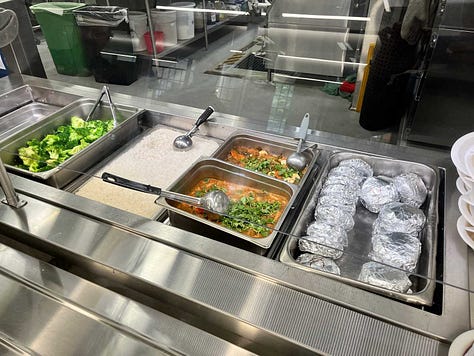

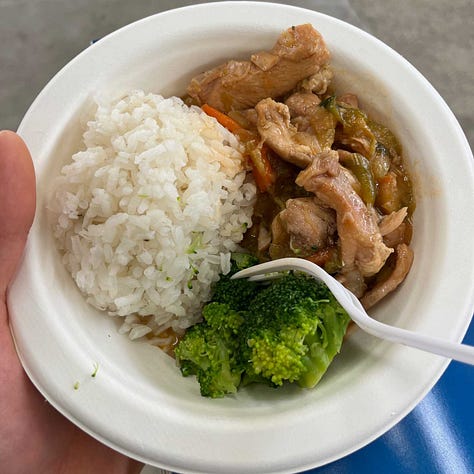
Looking ahead
Prop A is a work in progress, and there's still a long way to go. We are so glad to see the progress SFUSD is making in switching away from an outsourced food vendor and towards serving 100% of meals freshly prepared, on-site. While the full build out of the central kitchen won’t happen for another year or two (and is conditional on another bond), the work has already started to pay off with high student approval of the scratch meals at campuses where they are being served. We wish the whole project could be done with one bond, but we understand that Prop A is spread out across multiple facility improvements and modernization needs. It’s scratch made food like this that will be both healthier and more delicious for students.
Special thanks to Kate Levitt, Jennifer Lebarre, Kaitlyn Robinson, Joshua Davidson, and Phil Halperin.




